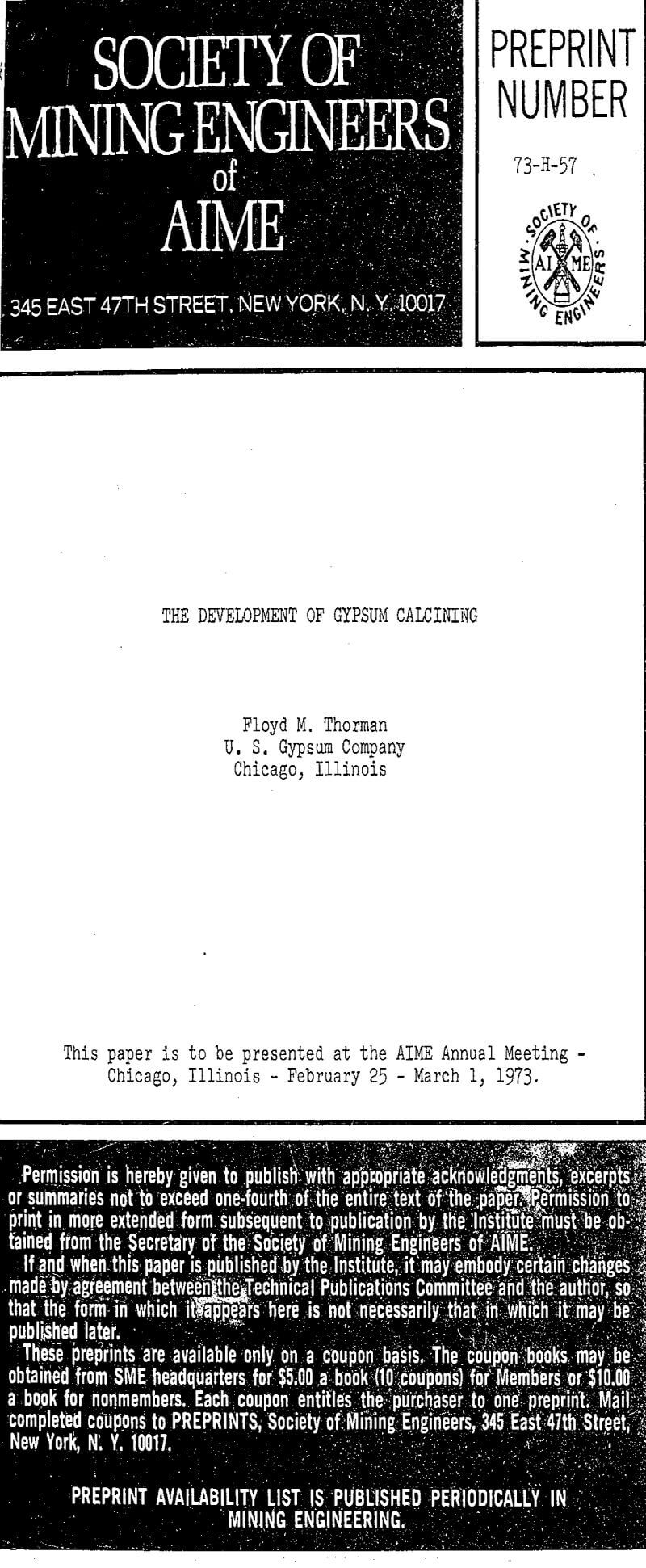Gypsum is the crystalline chemical compound CaSO4·2H2O. A close chemical relation – and frequently occurring with Gypsum – is Anhydrite which is CaSO4. Gypsun has wide commercial use because relatively simple heat processing reduces it to Plaster of Paris. While Anhydrite can be converted to Gypsum and thence to Plaster of Paris, the procedure is not simple and is quite costly. Anhydrite, however does have use in the agricultural field and in the Portland Cement industry.
The chemical compound of Gypsum, CaSO4·2H2O, breaks down into the following:
Lime (CaO)………………………………………………………….32.6%
Sulfur Trioxide (SO3)…………………………………………….46.5
Water…………………………………………………………………..20.9
Total………………………………………………………………….100.0%
Calcination of Gypsum was an accidental discovery as were its rehydration characteristics. Ancient man probably used lumps of Gypsum to enclose his fire. Some degree of calcination and softening occurred and when the fire was extinguished with water he noticed the lumps soon hardened. The next step was to break the massive Gypsum into small pieces and then to pulverize them in a hollowed out block of Gypsum or perhaps harder stone. The pulverized Gypsum was calcined in a vessel of some type, likely ceramic. The resulting product, eventually many hundred of years later, named Plaster of Paris, provided this early man with a medium for making cast objects.
In the grinding stage the fineness most generally is turned out at 90-93% minus 100 mesh with a 325 mesh range of 30 to 50%. There are, of course variations depending upon desired end products and the physical characteristics of the raw Gypsum.
From the early beginnings of the steel shell Kettle with flues, 100 years ago, progress in that design was rapid. It is basic and still in use today. This today’s Kettle consists of a cylindrical shell made of boiler plate resting on a convex bottom and with a gate for the rapid discharge of the contents at the end of the cycle. Fifty years ago the capacity on a calcined basis ranged from 5 to 15 tons per batch. Today the range is from 8 to 30 tons with the most common size 12 to 15 tons.
The definition of calcination is to heat inorganic materials but without fusing in order to effect useful chemical and physical changes. In the early days of Kettle calcination the handling was almost entirely an art. Today the Kettle Operator, or Calciner, as he often is called does not need to see the contents because he can depend upon instruments. Until fairly recently the calcination action was referred to as cooking which it literally is when the Kettle is first filled, which is gradual by conveyor over a period of 20-30 minutes, the mass must be kept active through the mechanical agitation requiring considerable power, until the temperature reaches 250°-260°F. At that point the batch becomes very active from the release of moisture and the power demand drops drastically. The action in the Kettle is exactly the same as boiling water. The volume in the Kettle increases and the surface is a mass of steam bubbles. The boiling temperature of 250°-260°F continues for 45-60 minutes on a straight line and then a very interesting thing happens.
The control of calcination has progressed greatly during the past half century. While the Kettle itself is basically the same, instrumentation has taken over. When I learned to calcine, fifty years ago, a three foot long wood stick or paddle was important. My teacher judged the “degree of doneness” by feel. His Kettles in 1920 were equipped with a long stem Mercury thermometer and a “new fangled” Recorder but final judgment was with the stick. Today we have fine recording instruments for temperature, power demand, etc. There are no belts to shift and no clutches to pull. The Operator stands before a beautiful console and pushes buttons with signal lights to tell what is happening.

